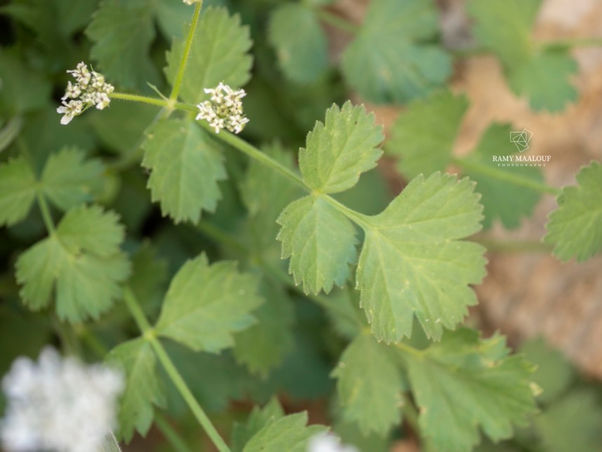Family |
Apiaceae
Heracleum humile
Sm.
Leb. Syr. Tur.
Heracleum humile Sm.
(First published in J. Sibthorp & J.E. Smith, Fl. Graec. Prodr. 1: 193; 1806. Treated in Nouvelle Flore du Liban et de la Syrie, vol. 2, p. 652, Pl. CCCXCIV nº 2; 1970)
• Life-form & habit: Papillose-pubescent perennial, slightly viscid. Stems 20 – 60 cm, erect or ascending from a scaly collar, striate, moderately branched.
• Leaves: Oblong in outline, pinnate, with 3–5 pairs of ovate-obtuse segments, deeply dentate or incised; sessile, except at the base where petiolulate and sometimes further pinnatisect.
• Inflorescence & flowers: Umbels with 3–6 rays. Involucre of linear bracts, caducous. Petals white, scarcely radiating. Involucel with linear bracteoles, often reflexed. Styles long, spreading.
• Fruit: Obovate, retuse, puberulent or glabrous; mericarp slightly spongy at the base, compressed higher up, with dorsal ribs only prominent in the upper part.
• Phenology: June – August.
• Habitat & elevation: Rocky summits, typically alpine, above 2 000 m.
• Lebanese distribution: Jabal Sannine, above the Cedars, ‘Aïn el-Qarn, Foumm el-Mizhab; also on Mt Hermon.
• Native range: Lebanon, Syria, Turkey; extinct in Greece (POWO).
• Conservation notes: Endemic to high summits of Lebanon and adjacent ranges. Its restricted alpine habitat makes it highly sensitive to overgrazing, trampling, and infrastructure development. Pine tree afforestation in subalpine belts could further threaten populations.
• ⚠️ Taxonomic note: Mouterde’s treatment closely follows Boissier’s circumscription; distinguished by its small size, papillose indumentum, few-rayed umbels, and fruits with partly spongy mericarps.





